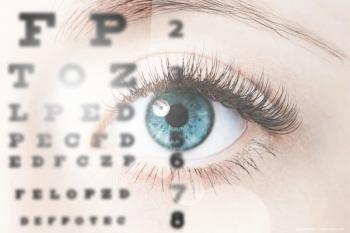
Study finds no signs of toxicity with viscoanesthesia OVD
Lisbon, Portugal – A viscoanesthesia-type of an ophthalmic viscosurgical device (OVD) did not show toxic or cataractogenic effects in rabbit eyes, according to a four-part study conducted at the Moran Eye Institute at the University of Utah, Salt Lake City, United States.
Lisbon, Portugal – A viscoanesthesia-type of an ophthalmic viscosurgical device (OVD) did not show toxic or cataractogenic effects in rabbit eyes, according to a four-part study conducted at the Moran Eye Institute at the University of Utah, Salt Lake City, United States.
During a clinical research symposium on new biomaterials in anterior surgery, Lillian Werner, MD, presented the results of an in vivo study that evaluated the toxicity of a new OVD solution that combines sodium hyaluronate with lidocaine (VisThesia and VisThesia Light, Hyaltech Ltd.).
In comparing the sodium hyaluronate with lidocaine with Ophthalin Plus (IOLTech), a balanced salt solution, and 1% lidocaine, Dr. Werner and her colleagues at the Moran Eye Institute studied the potential of the OVD in not only eliminating surgical steps for intracameral injection of lidocaine during cataract or phakic IOL surgery, but whether it would prolong the anesthetic effect.
Dr. Werner reported that in the four parts of the study, toxicity to the cornea was tested by exposing the extracted rabbit corneas to the OVD solution. Then the endothelium of the eyes was stained with trypan blue and/or alizarin red. In one part of the study, the anterior chamber of 18 rabbit eyes was injected with the 0.1 ml of the OVD solution. After clinical follow-up of 15 to 90 days, the rabbits were sacrificed and their eyes were removed and processed for evaluation. Another part of the study looked at 29 rabbits, which underwent phacoemulsification and injected with 0.2 ml of the solution in the capsular bag.
Following the staining of the corneas, clinical examination, and histopathological analysis, Dr. Werner reported that the enucleated eyes showed no signs of toxicity to the corneal epithelium, ciliary body, or the retina. She also said there was no signs of cell necrosis, cell degeneration, or fibrous metaplasia.
Dr. Werner concluded that the study showed that the OVD could prolong the anesthetic effect of the lidocaine during either cataract surgery or phakic IOL implantation.
“We could not find in these studies, any toxicity of any intraocular structures of rabbit eyes,” Dr. Werner added. “There was no cataractogenic effect to the crystalline lens. There was no change in time for injection or removal of this viscoanesthesia in comparison to standard OVDs.”
Newsletter
Don’t miss out—get Ophthalmology Times updates on the latest clinical advancements and expert interviews, straight to your inbox.















































.png)


